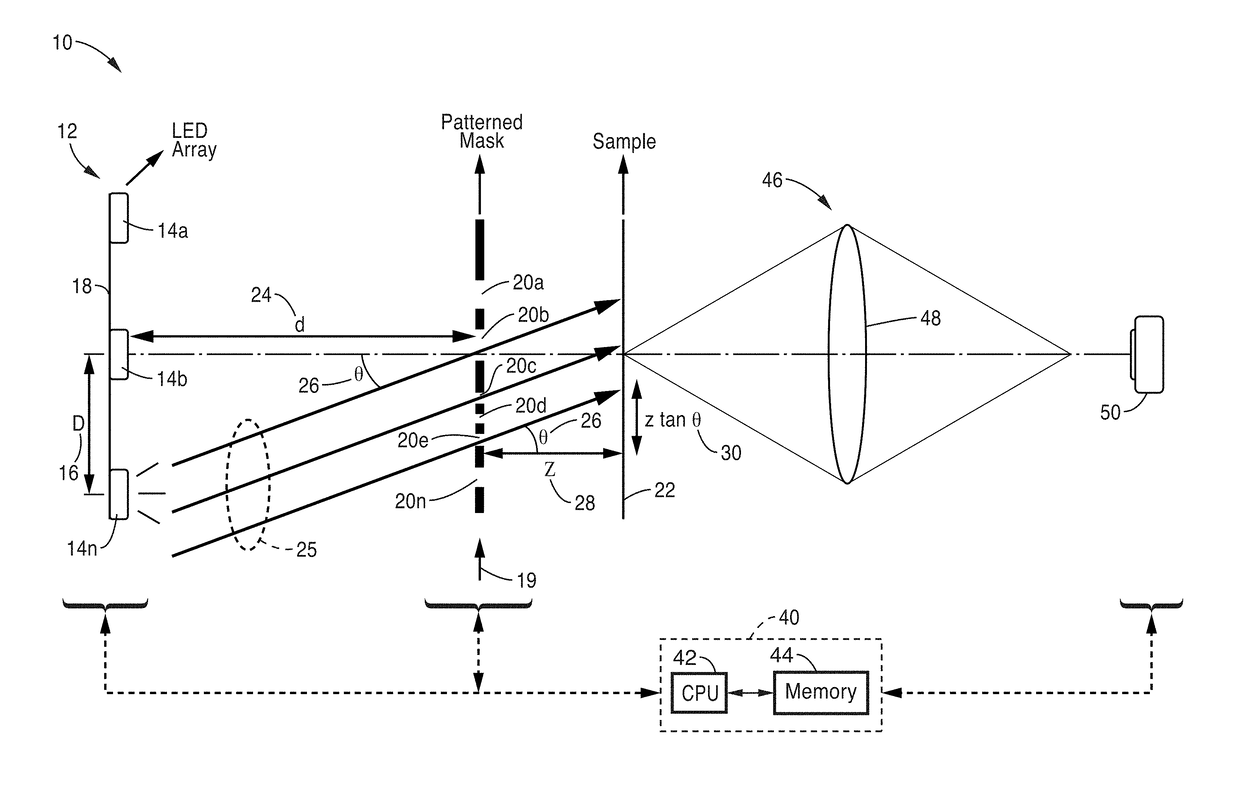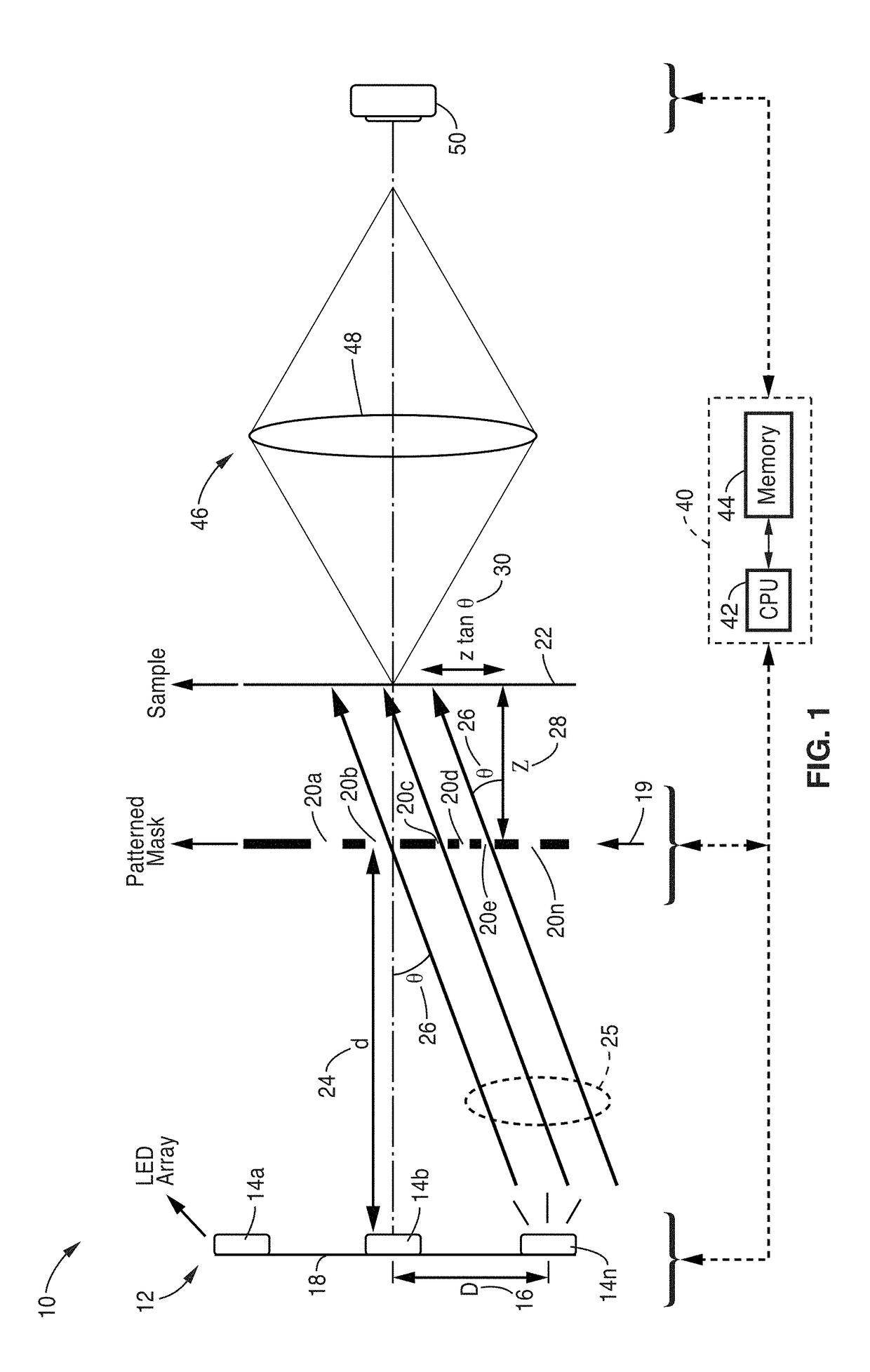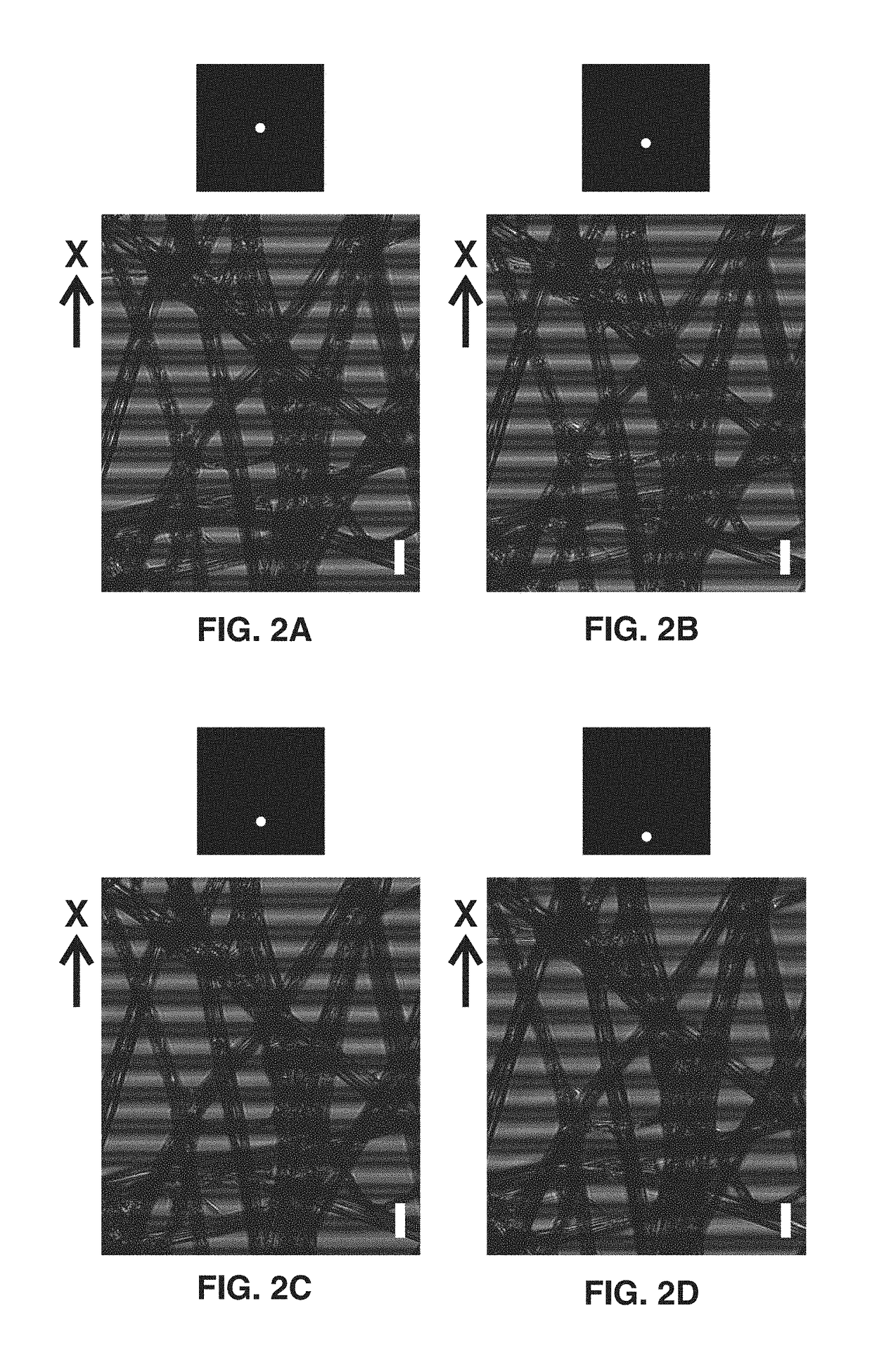Patterned-illumination systems adopting a computational illumination
a computational illumination and patterned illumination technology, applied in the field of illumination, can solve the problems of limiting the practical use of patterned illumination imaging modalities, existing structured illumination techniques that require expensive optical or mechanical devices, and achieve the effect of improving resolution imaging
- Summary
- Abstract
- Description
- Claims
- Application Information
AI Technical Summary
Benefits of technology
Problems solved by technology
Method used
Image
Examples
Embodiment Construction
[0029]1. Illumination Pattern Shift Using An LED Array
[0030]The concept of the disclosed patterned-illumination system adopting computational illumination, is exemplified in the following illustrations.
[0031]FIG. 1 illustrates an embodiment 10 of illumination pattern shifting using an array of optical elements, herein generally exemplified as a light emitting diode (LED) array 12, although other optical sources may be utilized without departing from the teachings of the disclosure. LED array 12 is shown with LEDs 14a, 14b, through 14n spaced a distance 16 (D) along a backplane 18. In this example LEDs 14a, 14b are shown non-active (not optically emitting) while LED 14n is actively outputting light. It will be appreciated that for the sake of simplicity of illustration, a single axis of LEDs is depicted, while in typical applications, the LED array would be implemented as a planar two-dimensional array.
[0032]The LED array 12 is placed sufficiently far away 24 (d) from the patterned m...
PUM
 Login to View More
Login to View More Abstract
Description
Claims
Application Information
 Login to View More
Login to View More - R&D
- Intellectual Property
- Life Sciences
- Materials
- Tech Scout
- Unparalleled Data Quality
- Higher Quality Content
- 60% Fewer Hallucinations
Browse by: Latest US Patents, China's latest patents, Technical Efficacy Thesaurus, Application Domain, Technology Topic, Popular Technical Reports.
© 2025 PatSnap. All rights reserved.Legal|Privacy policy|Modern Slavery Act Transparency Statement|Sitemap|About US| Contact US: help@patsnap.com



